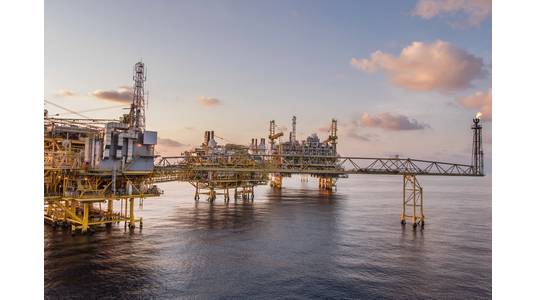
The offshore industry continues to find new ways to use machine learning and artificial intelligence to become more efficient, improve safety levels, and increase production. Stress Engineering Services is leveraging those technologies along with digital twins to help with condition-based maintenance and monitoring.
Kenneth Bhalla, Stress’s newly appointed chief technology officer, says the company is packaging a number of its services together to help with not just maintenance work but planning day to day operations and life extension projects. Its NeoSight automated asset integrity management offering gathers data from subsea vibration loggers and fatigue monitoring systems to create a digital replica of a floating facility – including fatigue – to indicate the yearly frequency a riser system or component should be inspected.
Real and virtual sensors combine to create a model that indicates the stress and fatigue of the system, which can be used in regular day to day operations planning, Bhalla says. It can also help with planning moves from one well slot to another to help minimize downtime, he says. For operators who are considering a tie back from a new discovery to an older facility, the life span of the existing system is often a question.
Using Stress’ inspection techniques, physics-based models, the digital twin, along with the history of the floating asset’s environment, or hindcast, it’s possible to determine how much of the design life has been consumed and whether the facility can operate for another 15 to 20 years, he says.
“We’re looking at what’s happening today, what’s happening tomorrow and how can we extend the life of a facility beyond its design life,” Bhalla says.
Historically such analyses took weeks, he says, but with automation and digitization, the results can be ready in minutes.
Stress will also speak at this year’s Offshore Technology Conference (OTC) in Houston about how the company took a limited data set and used sensor technology and machine learning to tell the asset’s operator, ExxonMobil, that based on how the upper flex joint of a riser was responding in a way that indicated vortex-induced vibration.
“That’s really valuable. We helped them manage their asset in a safe manner, saving them money and increasing their revenue,” Bhalla says.
With its personnel and “new artificial intelligence techniques and the machine learning techniques, you’ll see some quantum leaps in technology coming out of Stress Engineering soon,” Bhalla says.